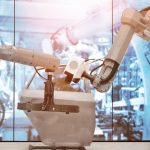Increased activity at Tesla’s Fremont Factory has drawn attention following fresh drone imagery suggesting changes in the company’s production landscape. With the rapid expansion in electric vehicle (EV) manufacturing, the focus has shifted toward unidentified casting components visible on factory grounds. Observers believe these developments may indicate an upcoming addition to Tesla’s product portfolio, broadening the automaker’s position in a competitive market. The sighting comes as Tesla continues to streamline its manufacturing approach, emphasizing efficiency and innovation in assembly processes. Industry analysts have speculated that Tesla may be moving closer to the launch of more affordable vehicle models, potentially targeting consumers beyond its established customer base.
Multiple earlier reports and visual documentation have tracked incremental changes at the Fremont site, often highlighting vehicle transport logistics and deployment of advanced software such as Tesla’s Full Self-Driving (FSD) technology. However, the newly observed castings differ notably from previous manufacturing cues, distinguishing this development from earlier updates that focused mainly on tweaks of known models. Publicly available sources had previously discussed plans for more economical models but had not referenced unknown castings or hinted at discrete prototype production at such a visible scale.
Why Are New Castings Drawing Interest?
Recent footage captured by drone operator Met God in Wilderness shows new vehicle castings arranged outside a sprung structure at Tesla’s Fremont Factory. These parts appear distinct from those associated with the Model Y, leading to speculation that they might belong to a vehicle in a different class or size segment. The castings’ compact form factor has led observers to discuss the possibility of a forthcoming, less expensive Tesla model.
How Is Tesla Integrating Automation At Fremont?
Tesla has expanded use of its Unsupervised Full Self-Driving (FSD) software in logistics on site, with vehicles actively transporting themselves from assembly lines to logistics lots. This integration marks an operational shift, reducing reliance on manual driving within factory grounds and accelerating movement of completed vehicles. According to the company, automated movement supports increased throughput and operational consistency.
Could New Models Reach Consumers Soon?
Elon Musk, Tesla CEO, stated in a recent earnings call,
“We’ll be running with the more affordable models available for everyone in Q4.”
Production for these vehicles reportedly started in June, with priorities placed on maximizing output before the end of Q3. Musk added,
“We’re going to keep pushing hard on our current models to avoid complexity.”
This strategy indicates a focus on driving both growth and simplification throughout Tesla’s product lineup as new options are prepared for release.
The current emergence of undisclosed castings and expanded automation follows earlier advances at the Fremont plant, yet distinguishes itself through visible evidence of product diversification. While previous updates highlighted Model 3 and Model Y improvements, the present development raises questions about Tesla’s approach toward affordable electric vehicles and modular manufacturing. Existing investors and potential buyers may see these factory changes as signals of coming product launches or manufacturing process revisions, though Tesla has yet to publicly confirm specifics regarding the new castings.
Closer scrutiny of Tesla’s Fremont activities reveals a multi-layered operational approach that integrates hardware changes and software capabilities. For readers interested in the automotive industry’s trajectory, these developments exemplify how companies manage technology shifts and scale up efficiency. While market watchers speculate about new models, practical implications rest on how soon and effectively Tesla can produce and deliver more economically viable cars. Those monitoring Tesla’s strategy should consider historical delays and the practical requirements of large-scale production shifts, as these can influence availability and pricing for the broader market. Continued observation of factory operations and direct company statements remains essential for distinguishing between speculation and confirmed information.










